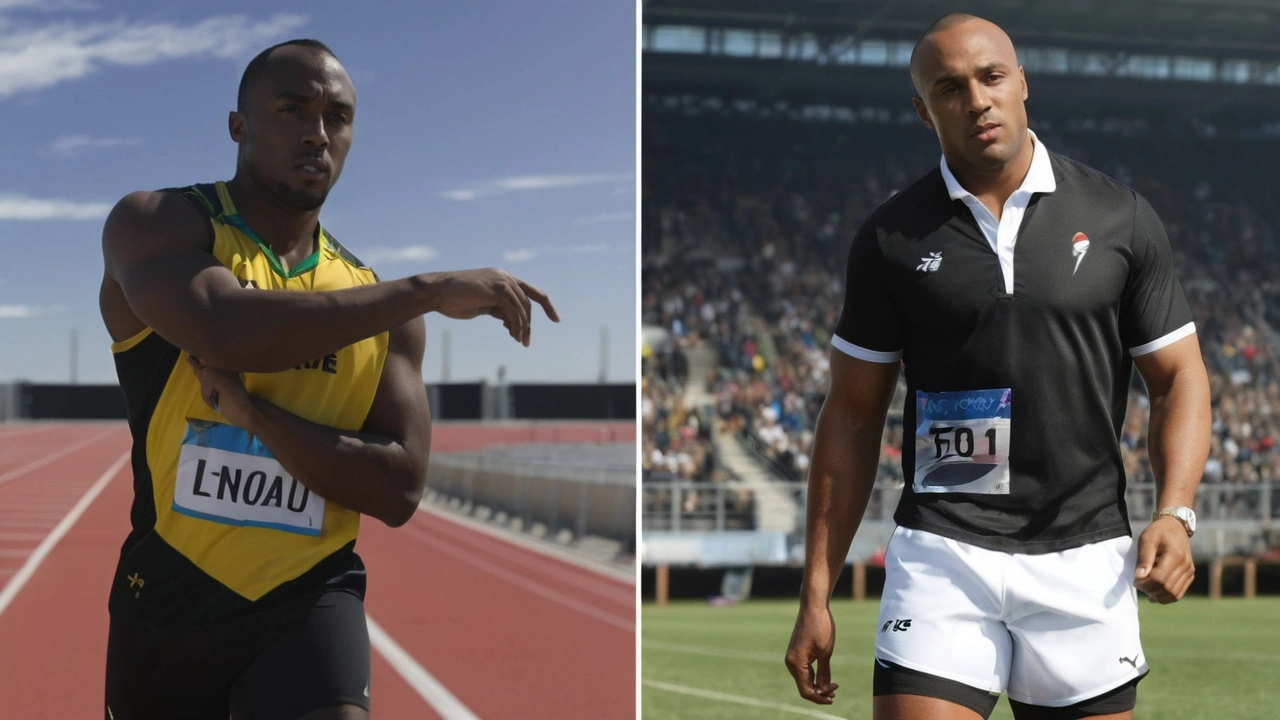The Tale of Two Legends: Usain Bolt vs. Jonah Lomu
A simulation has brought to light a hypothetical yet fascinating query: how would a 100-meter race unfold between the legendary All Blacks rugby player Jonah Lomu and the world-renowned sprinter Usain Bolt? Despite originating from starkly contrasting sports, both athletes have been celebrated for their remarkable speed, but this simulation provides an intriguing side-by-side comparison of their sprinting prowess.
Jonah Lomu: The Powerhouse of Rugby
Jonah Lomu left an indelible mark on the world of rugby. Born in New Zealand, Lomu burst onto the international scene with the All Blacks in the mid-1990s. Not only was he known for his sheer physical dominance on the field, but he was also recognized for his incredible speed. In October 1998, a study cemented his reputation as the world’s fastest rugby player. Recorded at a top speed of 10.6 meters per second, roughly translating to 22.3 miles per hour, Lomu's athletic commitment to speed was evident.
However, rugby, while physically demanding and requiring bursts of speed, is not centered around short-distance sprints alone. Rugby's broader athletic demands mean that even at his peak, Lomu’s speed over the 100 meters, while impressive at approximately 10.82 seconds, still rings a distant bell compared to specialized sprinters.
Usain Bolt: The Sprinting Phenomenon
On the other hand, Usain Bolt is synonymous with speed. The Jamaican sprinter has captivated global audiences with his lightning-fast races and unparalleled records. Bolt's career highlights include multiple Olympic gold medals and a world record time of 9.58 seconds for the 100 meters, a feat that etched his name in athletic history.
His exceptional performance on the track, combined with his charismatic personality, made him a global icon, but most importantly, it showcased the height of human sprinting prowess. Bolt’s technique, training, and natural aptitude converge to create a sprinting legend whose performances were dissected and revered by enthusiasts and professionals alike.
The Simulation
The simulation compared these two titans by extrapolating data from their peak performances. For Lomu, the 1998 study's metrics gave a clear insight into his top speed and estimated his 100-meter completion time at 10.82 seconds. Though faster than many athletes, it pales in comparison to Bolt's record-breaking time of 9.58 seconds.
This simulation underscores a fundamental truth in athletics: specialization is key. While Lomu’s speed on the rugby field was unparalleled and made him one of the fastest rugby players of his time, Bolt’s career was specialized and focused solely on the art and science of sprinting.
Specialists vs. All-Rounders
The results shed light on the difference between an athlete who is an all-rounder and one who is a specialist. Rugby requires players who possess a blend of speed, strength, endurance, and tactical acumen. As a rugby player, Lomu's abilities stretched beyond mere sprinting; he had the power, tackling ability, and stamina to dominate in a physically grueling sport.
In contrast, sprinting, particularly at the level where Bolt competes, demands a singular focus on speed and explosiveness over short distances. Sprinters dedicate years to mastering every aspect of the race, from the start, acceleration, top speed, to the finish. This level of specialization allows athletes like Bolt to achieve speeds that are unattainable for those whose training demands are spread across multiple skill sets.
Impact of Athletic Training
The simulation also illuminates the significant impact that sport-specific training has on an athlete's performance. Lomu's training regimen would have incorporated various elements pertinent to rugby, such as strength conditioning, agility drills, tactical plays, and endurance workouts, all indispensable for excelling in the sport.
Bolt's training, however, would focus almost exclusively on explosive speed, perfecting sprint technique, optimizing reaction times, and building fast-twitch muscle fibers. This highly specialized training structure is what enables sprinters to achieve those blistering speeds, refining every component that contributes to a faster 100-meter timing.
The Broader Implications
While the thought of a race between Lomu and Bolt is enchanting and makes for great debate among sports enthusiasts, it also highlights the broader understanding of how athletes are conditioned for their respective sports. Each sport demands unique attributes and the training tailored for those needs shapes the athleticism of its stars.
The simulation might serve as a reminder that while cross-sport comparisons are fascinating, the athletic world thrives on diversity, and each sport has its share of remarkable athletes who are supremely gifted in different ways. Whether it's the bone-crunching tackles and speed of rugby or the explosive, pure velocity seen in 100-meter sprints, both Jonah Lomu and Usain Bolt remain legends, each in their own realm.

The Takeaway
At the end of this hypothetical showdown, the clear winner on the fast track is Usain Bolt, but that takes nothing away from what Jonah Lomu achieved on the rugby field. This comparison serves not to diminish the accomplishments of either athlete but rather to celebrate their unique contributions to their sports.
In this age of advanced sports science and data-driven training regimens, such simulations offer insightful retrospective analyses and inspire curiosity about the different facets of athletic performance. As fans and commentators continue to explore these hypothetical matchups, the respect for the dedication and expertise of athletes across various sports continues to grow.






Write a comment